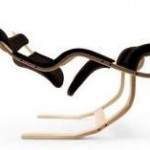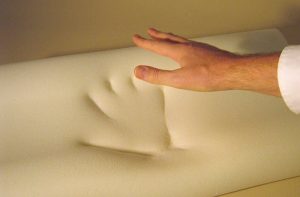 Back Pain in the Workplace
Back Pain in the Workplace
One of the most common problems that is often associated with jobs that involve sitting is back pain. Back pain can be a nuisance that can truly rob a person of energy and cause discomfort throughout life. It was common thinking that heavy lifting was the primary cause of lower back pain. However, it has been proven that a major contributor to lower back pain is actually sitting.
More than 70 percent of working-class people will complain of back pain. The most common is typically chronic lower back pain that is caused by sitting. Factors that often cause back pain are:
– Sitting incorrectly
– Continuous sitting
– Sitting over a long period of time
These factors all contribute to back pain over time. Furthermore, these conditions are what cause back pain for a majority of workers who may not have known that excessive sitting is the cause of the havoc on their lower back.
Adjusting Your Chair to Relieve Back Pain
Sometimes, an ergonomic chair is not available in places such as an office. To prevent back pain due to a bad chair, it is best to sit with good posture with both feet on the ground. A chair that does not allow users to firmly plant their feet on the ground will cumulatively add to a person’s back problems.
How to Deal With Back Pain
Another way to relieve back pain due to an uncomfortable chair is to get up and stretch. Humans are not meant to sit in a chair for hours on end. If it is necessary to sit down for more than four hours at a time, it is recommended that a person should get up and gently stretch their back.
In addition, the best way to treat this type of lower back pain is by sitting correctly and adjusting posture. Sitting up straight will temporarily help with the long-term effects of sitting.
Exercise and practicing good posture when standing or sitting is a sure way to help combat back injury that is caused by sitting. Yoga is another great way to gently relieve the spine of unwanted pressure that can give workers a bit of relief from sitting.
Selecting an Ergonomic Chair
Many people can reduce their back pain by adjusting the chair they have to properly support their backbone. Choosing a ergonomic chair for your back is one of the best investments someone can make for their back health. A good chair will have the following:
– Good back support to sit up straight
– The ability to change positions comfortably
– A good seat that will distribute weight properly
Ergonomic Chairs and Back Health
There are a variety of ergonomic chairs that will accommodate anyone’s personal style and still offer the relief that is necessary to prevent back pain. It is wise to select a proper chair that will make a sitting experience more comfortable. Ergonomic chairs often can correct this situation by supporting the lower back.
Remember, sitting down causes a strain on the back and puts up to 40 percent of a person’s body weight solely on the spine. It is highly necessary for workers who sit for a long time to acknowledge that lower back pain does not occur over night. It is a condition that takes time to occur but can be prevented through the use of an ergonomic chair.



Some people like to get out of bed and start their day with a few stretches or exercises. This sounds great in theory, but your morning workout routine may put you at risk for injuring your back. Make sure your workout does not include any activities where you are flexing/bending your spine. What is one common exercise where people flex their spine? Sit-ups. The typical sit-up-performed with knees bent and lying on your back-places significant stress on your spine. You should avoid this typical sit-up. There are multiple alternatives to the typical sit-up mentioned that place less stress on your spine. Additionally, avoid any stretches or exercises that force you to bend your back, such as touching as your toes.
Chiropractors employ techniques which focus on the treatment and prevention of nervous system and musculoskeletal system disorders. Chiropractic treatments often include specialized treatment to the spine utilizing spinal manipulation and soft tissue therapy which helps the supporting structures surrounding the spine. People often have successful treatment that are suffering but not limited to headaches, neck pain, back pain and joint pain in the legs or arms.